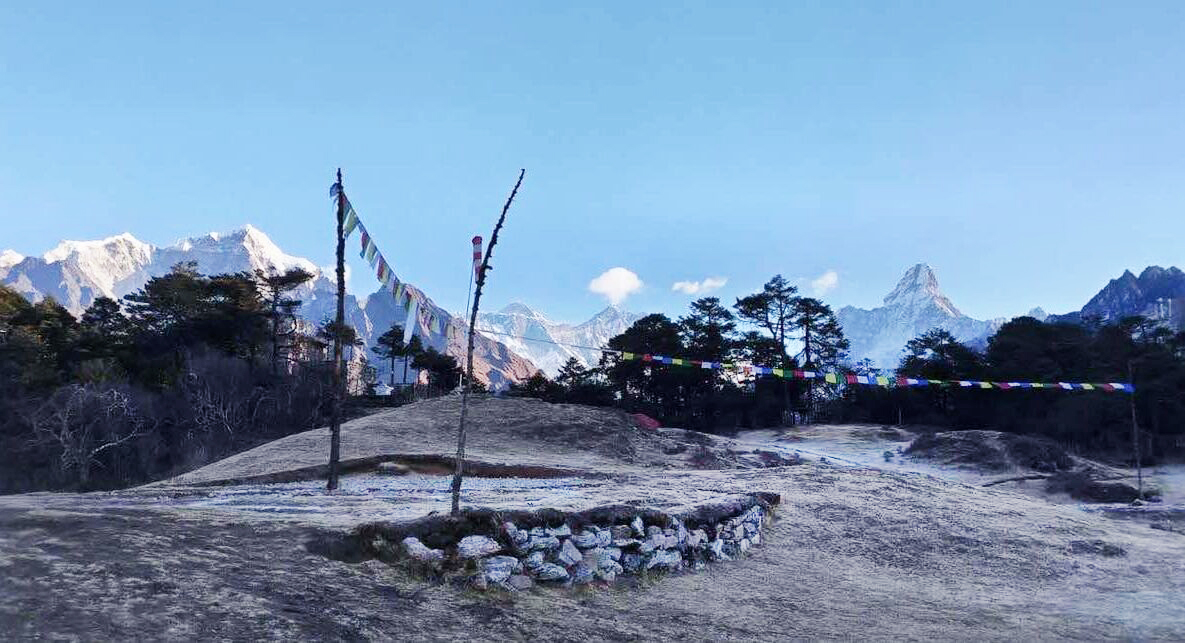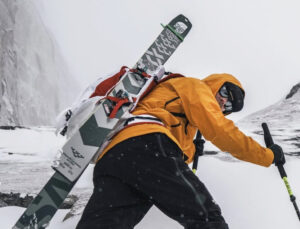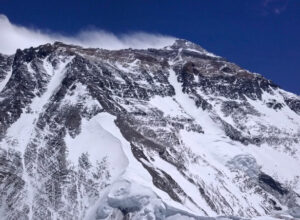The multicolored little flags ever-present in high points in Nepal, from buildings to chortens to summits, are known as lung-ta or wind horses. Their mission is to spread the power of the prayers printed on the fabric as they flap in the wind. But in the last few days, they have been used as barriers to prevent helicopters from landing in the Khumbu Valley at the foot of Everest.
The New Year came with an unpleasant surprise for helicopter pilots heading to the Khumbu. Locals had installed poles with lines of flags that made landing too dangerous. Small groups of young protesters even threatened the crews if they persisted in their plans to operate in the region.
An old debate
This was an escalation of a previous conflict between Khumbu locals and the helicopter companies. Last month, Khumbu authorities announced they would ban tourist flights in the region to prevent the environmental impact on wildlife. They also suggested that the practice was damaging local businessmen, as aerial tourists don’t stop in the Khumbu and so spend no money on lodging or food.
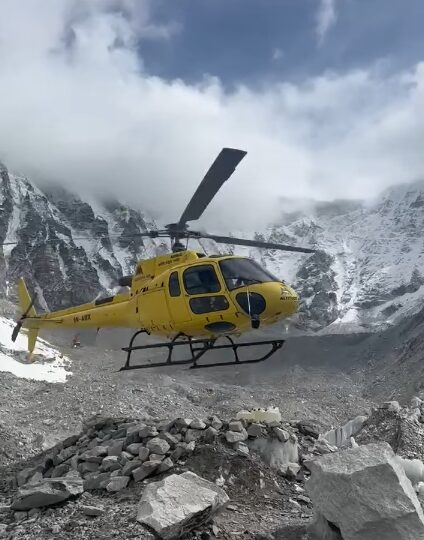
A helicopter takes off from Everest Base Camp. Photo: Pemba Sherpa/8K Expeditions
At that time, the Civil Aviation Authority of Nepal (CAAN) ignored the protests and reminded local authorities (the Khumbu rural municipality and the national parks) that they had no mandate to control airspace.
Some meetings took place between the Airline Operators Association of Nepal (AOAN), the national parks, and local authorities, but the parties reached no agreement. This further angered locals, who took matters into their own hands and set up the flag blockades.
All flights suspended
The affected all commercial flights, not just sightseeing tours. The situation has prompted the AOAN to suspend all commercial flights until the safety of pilots and passengers is guaranteed.
On January 1, the Ama Dablam Youth Club from Pangboche took responsibility for planting the flag poles on the landing spots. The group insisted that the protest would continue until the local authorities and the Sagarmatha National Park asked them to stop.
“Also, we would like to inform all heli companies not to use the helipads of Pangboche, Dingboche, Pheriche, Lobuche, Gorakshep, and Chukung for commercial flights from January 1, 2025,” the club wrote. “If any obstacles are encountered at those places due to reckless and forced commercial flights against the rules, we, the club, and the local residents will not be responsible.”
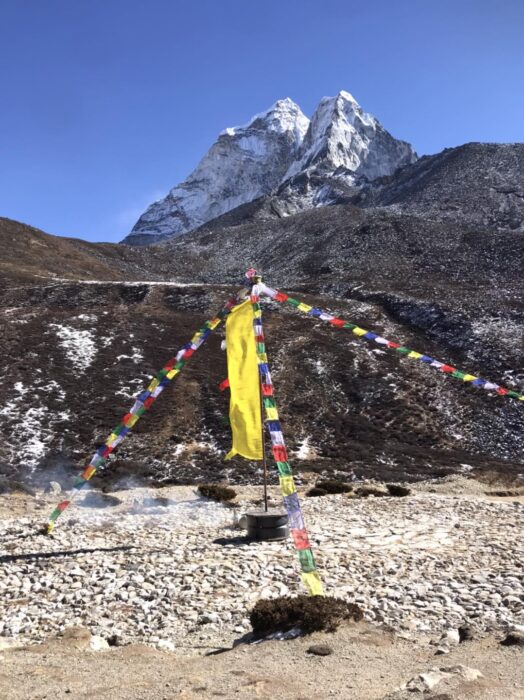
Helipad blocked in the Khumbu. Photo: Ama Dablam Youth Club
However, winter is a slow season, and the main concern revolves around preparations for spring trekking and climbing, which begin in a few weeks. Helicopters fly up and down the Khumbu constantly, not just carrying visitors and staff but also transporting loads and even performing emergency evacuations. It’s hard to imagine this trend reversing when the 11 helicopter companies operating in the region make such hefty profits.
Little chance of change
As we pointed out in a previous story, it is unlikely the situation will differ much from 2024, and it is likely that the protests will end in a few days. First, blocking a helicopter landing pad is against the law, and those protesting in that way face strict punishment. The District Administration Office has already announced legal action.
Second, they will not find enough support, even from their own side. Locals and helicopter companies need each other and know that the way to resolve differences is through negotiation. Third, there is too much money involved.
“Despite noise pollution, helicopter transportation plays a crucial role in the Khumbu region,” wrote Pemba Sherpa, founder of 8K Expeditions. “It saves many lives [for those needing evacuation], and it is the most convenient means to transport goods and passengers.”
He suggested that operators could do their part by improving Khumbu residents’ access to helicopter transport, either by cutting their fees or giving them priority when they need to be airlifted.
Talks resume
Immediately after the first flag blockades, cooperative negotiations among the stakeholders resumed. On January 6, Sagramatha National Park issued an appeasing press release that highlighted the importance of helicopter services to tourism, construction, and emergency rescues. It stated that “private helicopter operations will be permitted, as long as they adhere to existing laws, prioritize safety, obtain required permissions, pay applicable taxes, and operate without harming biodiversity, wildlife, or forested areas.”
Basically, they suggested a return to the previous situation.
In the end, politicians, administrators, and entrepreneurs don’t want to harm Nepal’s highly profitable tourism industry. However, they do need to walk a fine line with international sensibilities: Bad public relations about the potential damage done by helicopters could discourage environmentally concerned tourists and prompt locals to take action again.
This also occurred in the Manaslu area last fall, and now those involved need to make sure it does not repeat in the Khumbu during peak Everest season.
